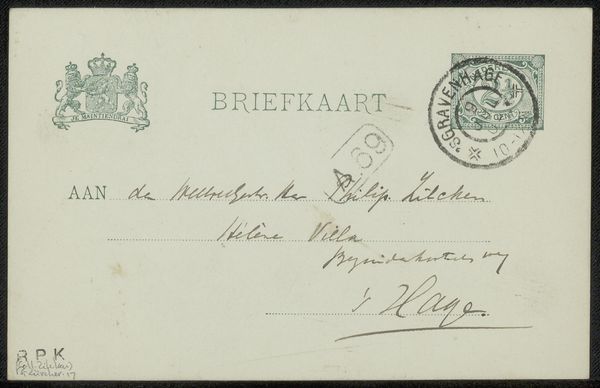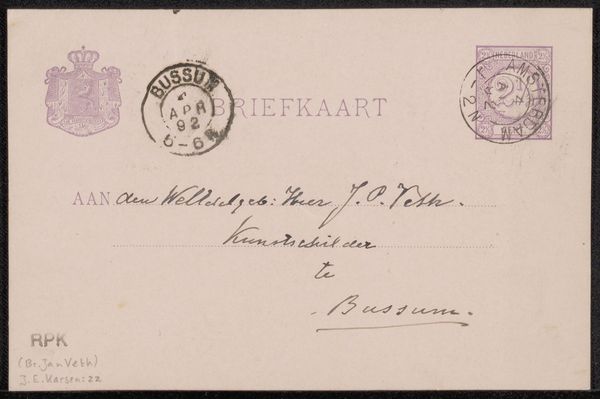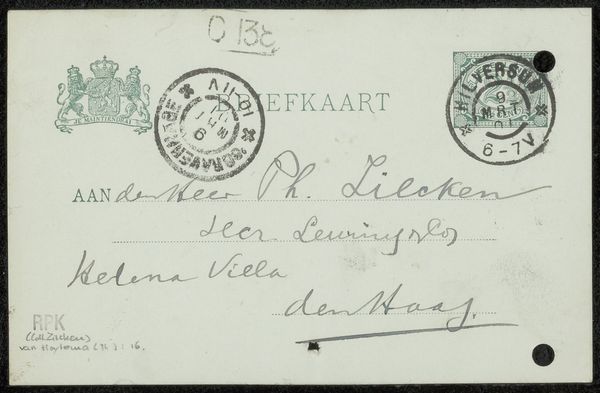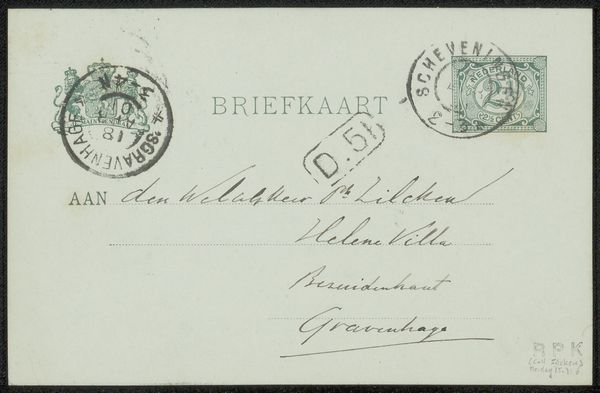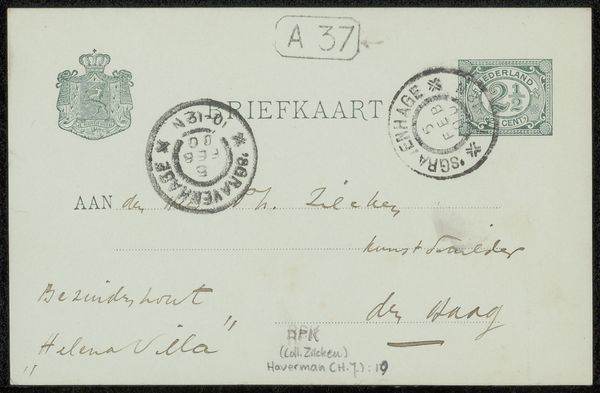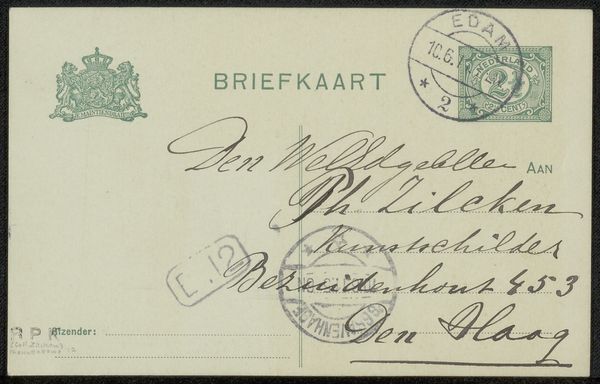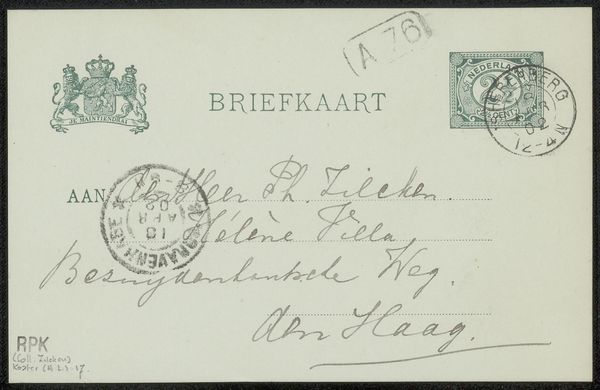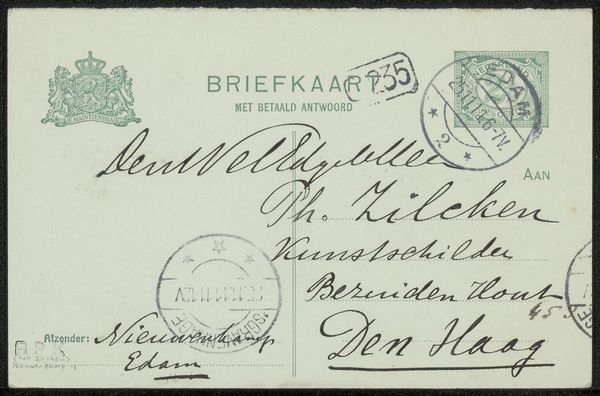
drawing, paper, ink, pen
#
drawing
#
script typography
#
hand-lettering
#
old engraving style
#
hand drawn type
#
hand lettering
#
paper
#
personal sketchbook
#
ink
#
hand-drawn typeface
#
pen work
#
sketchbook drawing
#
pen
#
sketchbook art
Copyright: Rijks Museum: Open Domain
Curator: Suze Groshans created this postcard addressed to Philip Zilcken, probably around 1902. It's pen and ink on paper. What's your immediate impression? Editor: My first impression is its stark elegance. The subtle off-white of the paper, combined with the precise lines of the handwriting, creates a quiet but striking visual rhythm. Curator: Absolutely. Handwriting itself, especially from this era, becomes a crucial lens. This "Briefkaart," is situated in the Dutch context of its time and is part of the Zilcken collection, suggesting potential intellectual or artistic exchanges within that circle. Handwriting, we should remember, served as an intimate form of self-presentation for privileged people before mechanical forms of printing became widely diffused. Editor: Precisely! And if you isolate a single word, even a simple address like "Heilénvilla," the letterforms themselves exhibit an admirable level of calligraphic sophistication—consider how the descenders loop to integrate themselves with the ascenders in a fluid calligraphic structure. Even the postal stamps, their placement and graphic detail, play into the overall composition. Curator: We can also look at the message beyond the strictly visual elements and reflect on what it tells us about women's roles in artistic networks at the time. These 'briefkaarten', and letters generally, served as a key mode for women artists to collaborate and network within otherwise male dominated systems. Editor: An intriguing point. It suggests that Groshans saw this "Briefkaart" as more than a mere delivery slip; rather, as a personal declaration to a specific intellectual colleague and potential supporter. Curator: Which further allows us to see such correspondence as crucial archives in feminist historiography, for it sheds a light on the work, often undervalued or occluded, undertaken by women to build both professional and intellectual connections across their own artistic fields. Editor: The restrained palette also invites an almost semiotic reading: the near monochrome of the card—were it more exuberant or varied—might detract from the text itself and introduce unintended connotations. Curator: Thank you for noticing those finer visual structures. I wonder what future generations will make of the few traces we're leaving of our communication methods? Editor: A sobering thought! And for myself, the experience of carefully evaluating line, texture, and composition has, as ever, intensified my aesthetic understanding, while I now also better recognize the role that this played in broader exchanges of value for women artists at the time.
Comments
No comments
Be the first to comment and join the conversation on the ultimate creative platform.
